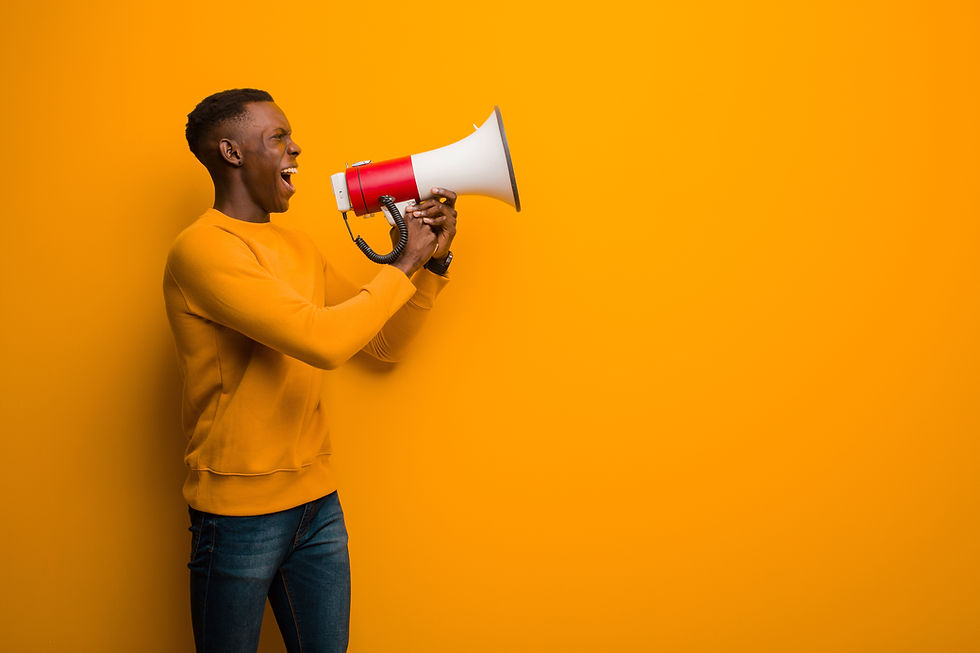Exploring Free Speech in the Digital Age: A Conversation We Need to Have
- Mattison Yogi Williams

- Nov 1, 2024
- 2 min read

In today’s hyperconnected world, conversations around free speech, technology, and responsible communication have never been more relevant—especially as we approach another U.S. presidential election season. As we’ve seen with high-profile figures whose rhetoric has the power to shape perspectives, incite action, and, at times, sow division.
My Master’s thesis focused on the complex nature of free speech, examining it as both a force for positive change and a potential weapon for harm. Through a deep dive into philosophical foundations and real-world case studies, like the Charlie Hebdo incident and The Dangerous Speech Project, I explored the question: How do we protect free expression without allowing it to become a tool of destruction?
Dangerous Speech is a critical concept in this dialogue. Unlike ‘hate speech,’ which is often broad and inconsistently defined, dangerous speech focuses specifically on rhetoric that increases the risk of violence. The Dangerous Speech Project, founded by Susan Benesch, provides a framework for identifying and responding to such speech without infringing on free speech rights. Here are the five main criteria it uses:
Speaker: Is the message coming from an influential figure (e.g., politician, celebrity)?
Audience: Is the audience vulnerable to inflammatory messages due to pre-existing fear or resentment?
Message Hallmarks: Does the message contain dangerous patterns like:
Dehumanization: Comparing the target group to animals, insects, or diseases.
Accusation in a Mirror: Portraying the target group as a threat to make violence seem like self-defense.
Attacks on Women/Girls: Asserting that women or girls are at risk from the target group.
Coded Language: Using language that has hidden meanings to incite the audience.
Impurity/Contamination: Suggesting the target group will 'pollute' the purity of the audience’s community.
Context: Are there underlying social or historical tensions (e.g., resource competition, past violence) that could make violence more acceptable?
Medium: How influential is the platform through which the message is delivered?
For more on dangerous speech, check out The Dangerous Speech Project’s resources here and their guide on counter-speech, which advocates addressing harmful rhetoric with factual, compassionate responses instead of outright censorship.
In this series, I’ll explore key themes from my thesis, including:
The Duality of Free Speech: How something so fundamental to democracy can carry the potential for violence.
Historical & Philosophical Foundations: Insights from concepts like isegoria and parrhesia, and John Stuart Mill’s Harm Principle.
Case Studies in Dangerous Rhetoric: From Charlie Hebdo to modern political discourse, examining when free speech crosses the line.
Empathy and Responsibility: Why a societal shift toward empathy, compassion, and responsibility in speech is essential for democracy.
As communication technology evolves, so too must our understanding of free speech’s role in society.
Join me as we navigate these challenging yet crucial questions together.
References
The Dangerous Speech Project's Practical Guide - https://www.dangerousspeech.org/libraries/guide
Counter Speech - https://www.dangerousspeech.org/counterspeech
Ahmed, Saladin. 2015. In An Unequal World, Mocking All Serves The Powerful, The New York Times. https://www.nytimes.com/roomfordebate/2015/01/10/when-satire-cuts-both-ways/in-unequal-an-world-mocking-all-serves-the-powerful
Bejan, Teresa. 2017. The Two Clashing Meanings Of 'Free Speech', The Atlantic. https://www.theatlantic.com/politics/archive/2017/12/two-concepts-of-freedom-of-speech/546791/





Comments